|
BULB LOG 49 --- 3rd December 08
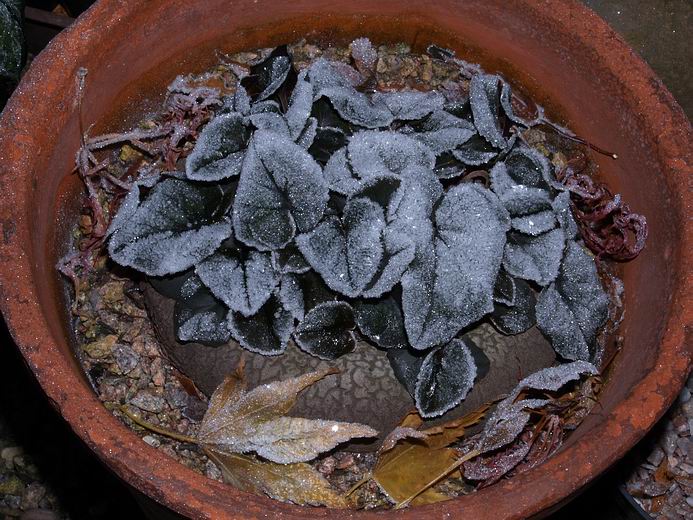
Cyclamen pseudibericum
I know that we Scots are often ridiculed for our fixation with the weather, as we are always speaking about it, but if your weather changed as quickly and dramatically as ours does then you would also be obsessed. Since last week's bulb log the snow disappeared and cold and heavy frost, -8C, arrived for a few days before it became mild on Monday and back to snow on Tuesday. If we get confused, imagine how the bulbs must be when so often they are used to distinct seasons in their native habitat - but even that is changing nowadays. This is one of our few plants left in a clay pot - it is a large corm of Cyclamen pseudibericum which makes occasional outings to the spring shows and it has picked up a first prize or two over the years. The trouble is that as the foliage starts to grow in the autumn it has a tendency to become etiolated in the poor light under glass autumn so this year I have decided to grow it quite hard; outside as often as is possible without risking the plant completely to see if I can produc
e a better, more compact plant with as many flowers.
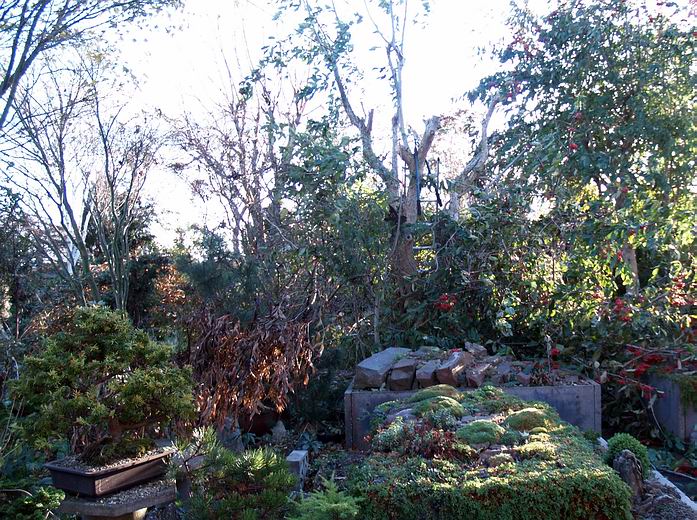
Tree for the chop
You will remember that some Logs back I decided to remove a tree - I even gave you the chance to help select the one that should go - well on one of the better days last week I took action and the Cotoneaster has been chopped . Its removal will allow more light to get to our raised alpine beds again as well as the bulb bed that is all around the base of the tree. I do not intend to remove the stump just now as the bulbs would not appreciate being disturbed while they are in root so perhaps I will dig it out in the summer.
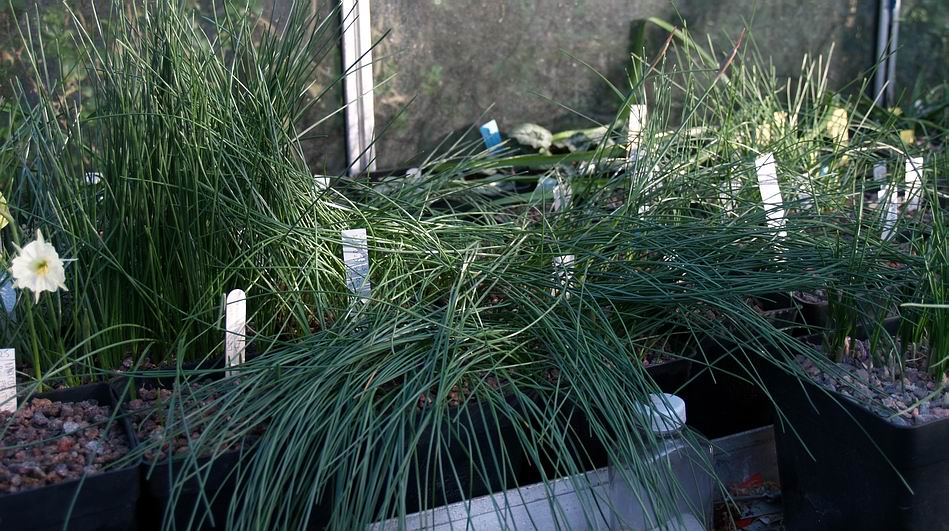
Narcissus foliage
On the mild days some of the bulbs, like these Narcissus, looked decidedly thirsty with their leaves flopping over so I decided to water them. Watering early in the day so that the surplus water has plenty of time to drain away before the night time drop in temperature comes should minimise any risk. With the swinging temperatures through the winter it is always a challenge to know when to water the bulbs: if they get too dry then they could be damaged but if they are too wet and the temperature suddenly falls below freezing then there is a danger that the cold penetrates the wet compost quicker and may also damage the bulb. It is just a case of watching the plants and the forecast and although the weather is set to turn colder it is not going to be too severe so I made my decision to water the pots with leaves.
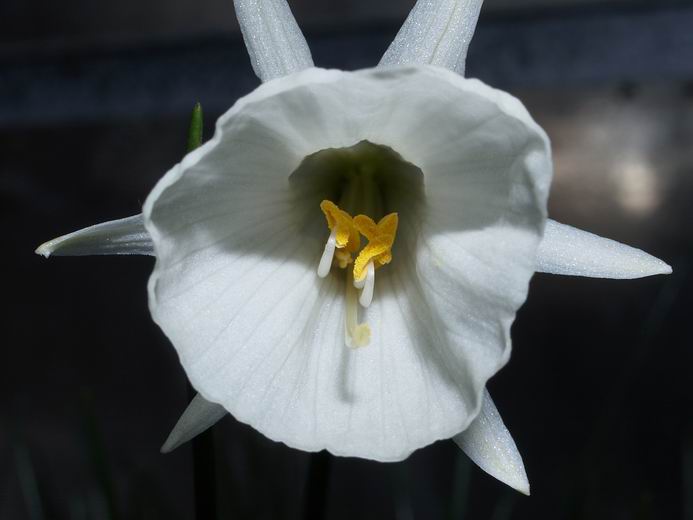
Narcissus cantabricus flower
In the peak bulb periods I always have plenty of pictures and only show a fraction of them on the bulb log and I am never stuck for things to write about - but occasionally, in between peaks, I have to think hard about what I can write about. This week I had an idea to cover sowing bulb seeds as all the seed lists are making an appearance but I made the mistake of breaking my own rule of not looking back to see what I wrote in previous years logs before I wrote this weeks offering. That was a big mistake as I discovered that I must have had the same dilemma of wondering what to write about in 2006 as bulb log 49 covers seeds - so you can now look back to discover what I might have written, had I not looked back ! Anyway I always tell people that growing bulbs is a 365 day activity with something of interest every single day so I went to see what I could find to photograph in the cold and snow-covered bulb houses. This very welcome Narcissus cantabricus flower with its bright crystalline white corona and petal
s surrounding the golden pollen laden anthers awaits a pollinator. It is going to have a long wait as there are not going to be any insects around in these cold conditions - it will have to make do with me and my paint brush to transfer some pollen onto the stigma and hope the temperature rises enough to allow the pollen to grow down the tube to the ovary.
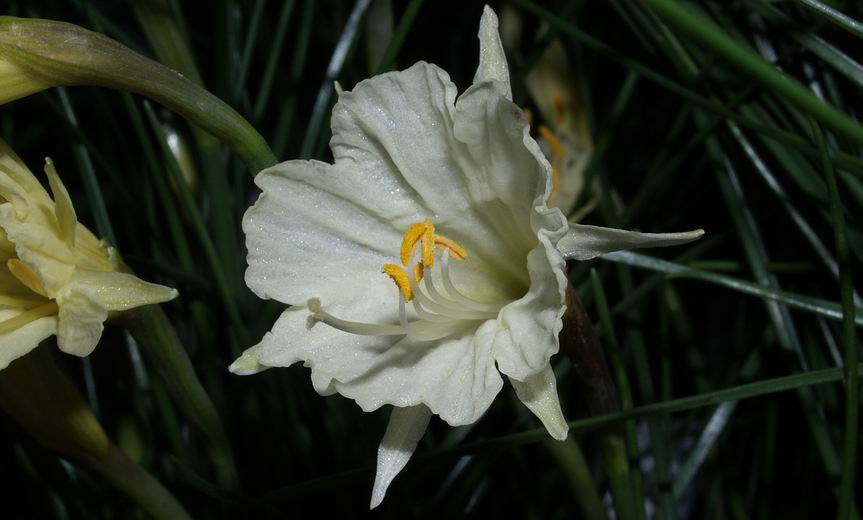
Narcissus hybrid flower
Likewise this Narcissus hybrid flower, one of the flowers in my pot of 'Joan Stead' that I showed last week. I am not sure if I have more than one clone in this pot or if the degree of scalloping in the lobes of the corona is variable as there is some variation between the flowers - I will show more as they open in coming weeks.
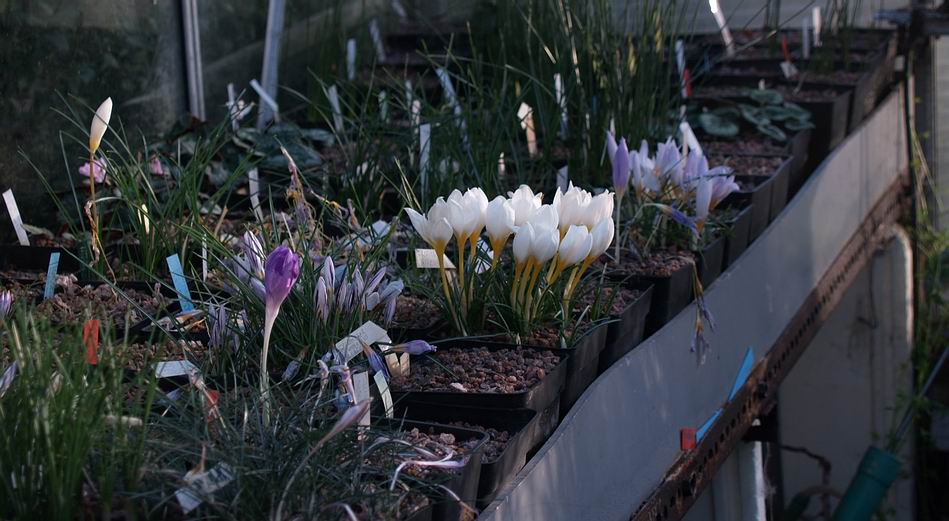
Bulb house
It is good that the Narcissus are now starting to flower taking over from the Crocus that have been the stars of the bulb house for the last few months but the crocus are not quite finished yet with one or two still hanging on looking good - plus many more of the genus will be back in force in the late winter and into spring.
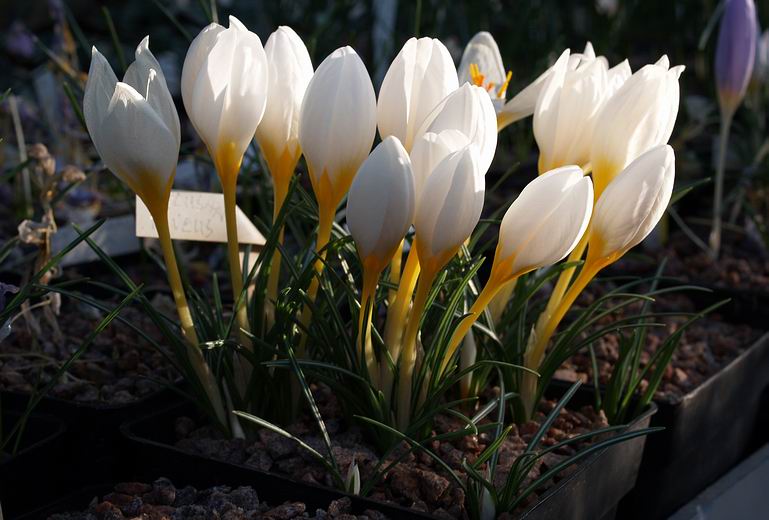
Crocus niveus
This late form of Crocus niveus has caused me some confusion over the years I have scored out the name on the label and added question marks several times but always seem to arrive back with the original name I got the plant as. It is not the typical form of C. niveus that we see in cultivation but I am encouraged and reassured by all the excellent posts on the Crocus pages of the Forum where many members have posted pictures of crocus growing in the wild showing the variations that can be seen in wild populations - thank you one and all.
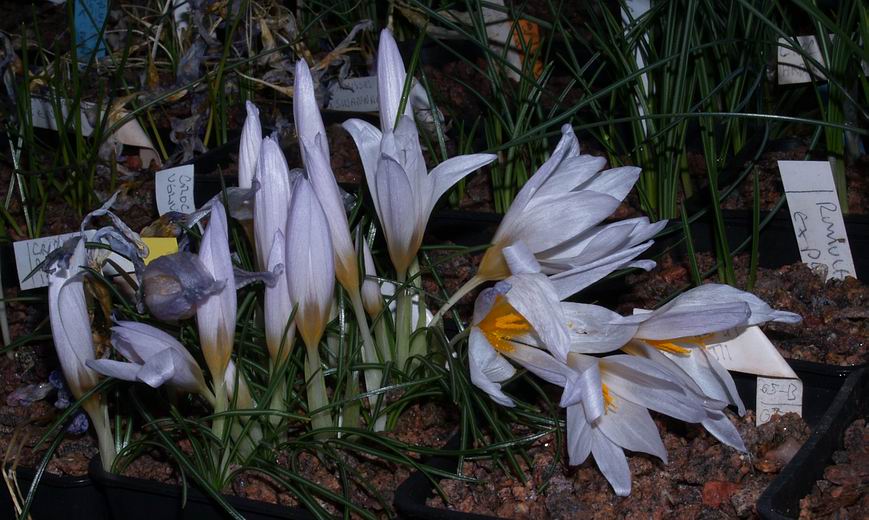
Crocus caspius
Normally we only photograph flowers when they are at their peak but they are still beautiful as the start to wither away. In fact they often reveal another beauty as this pot of Crocus caspius shows a second flush of blooms appear as the first ones are in decline.
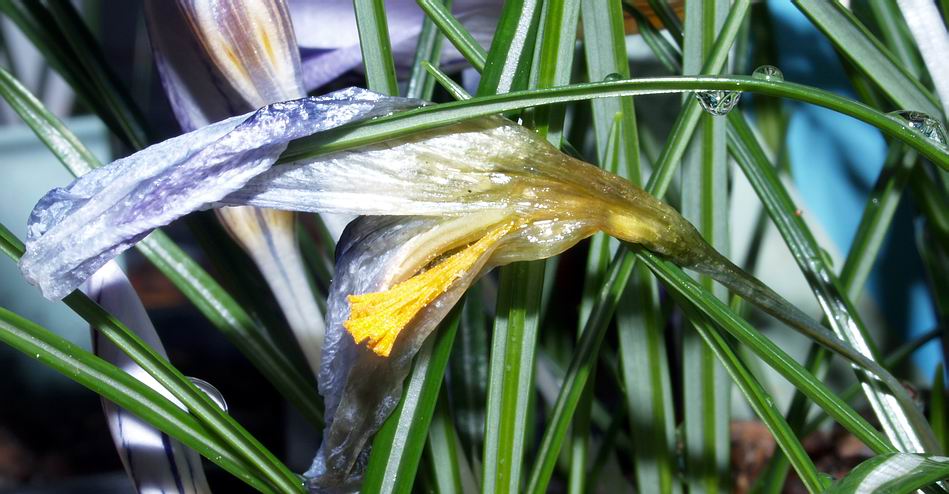
Crocus laevigatus
This Crocus laevigatus reveals a beauty as it withers in the cold dark bulb house - notice that the stigma still looks receptive as the floral segments fade.
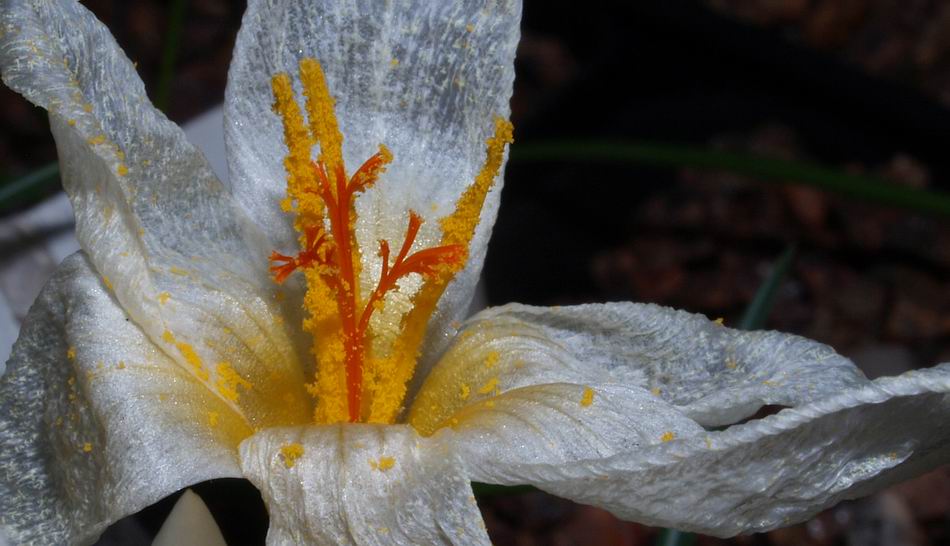
Crocus niveus flower past its best
So there is great beauty to be found as the flowers pass like this fading flower on Crocus niveus revealing an almost lace like appearance as parts of the segments loose their pigment and become almost transparent.
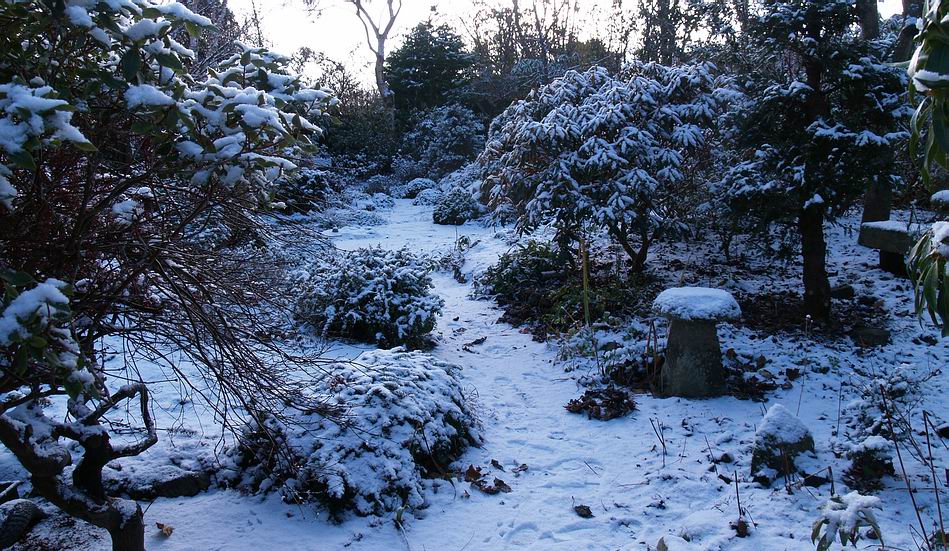
Snow in garden
Back to the weather the heavy snow came and went, we had some severe frosts and some milder days now we have a thin covering of snow and frosts again with the threat of heavy snow falls through Thursday.
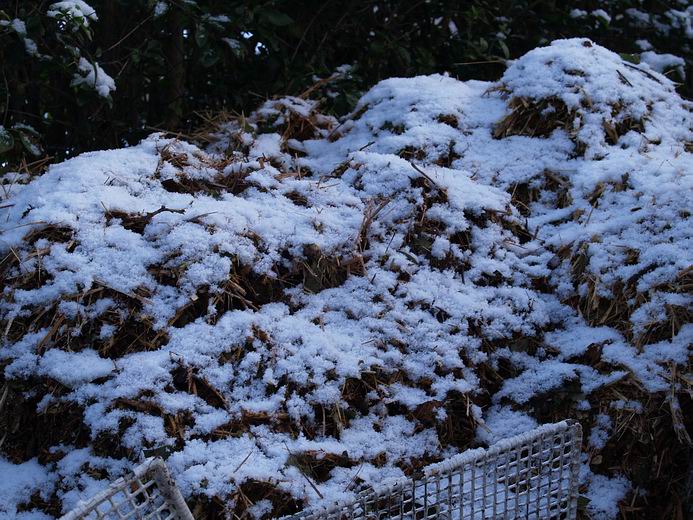
Shredded tree
On one of the milder days I managed to shred most of the tree that I cut down and here it is composting before I spread it as a mulch over the Rhododendron beds.
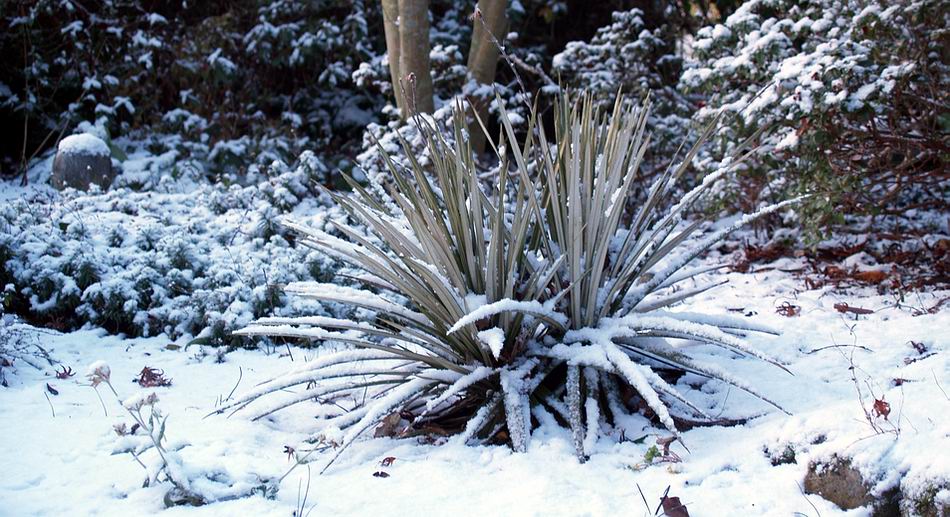
Celmisia armstrongi
Celmisia armstrongi is one of the many New Zealand plants we grow that give interest all year around providing interesting forms even in the snow.
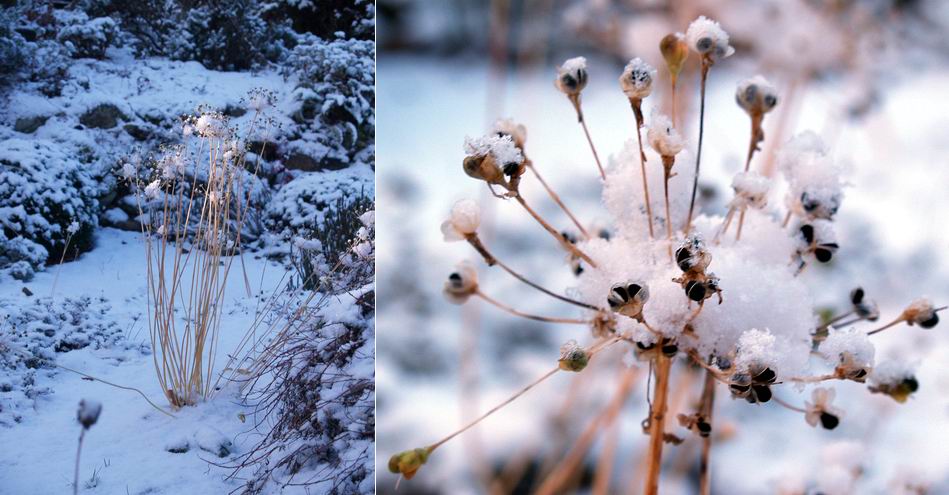
Allium seed heads in snow
As I looked around the garden to see what bulb was providing interest in the snow, a thin shaft of sunlight lit up these Allium seed heads which shows me how very attractive they look as well as reminding me that I have not collected the seeds yet.
^ back to the top ^
|

